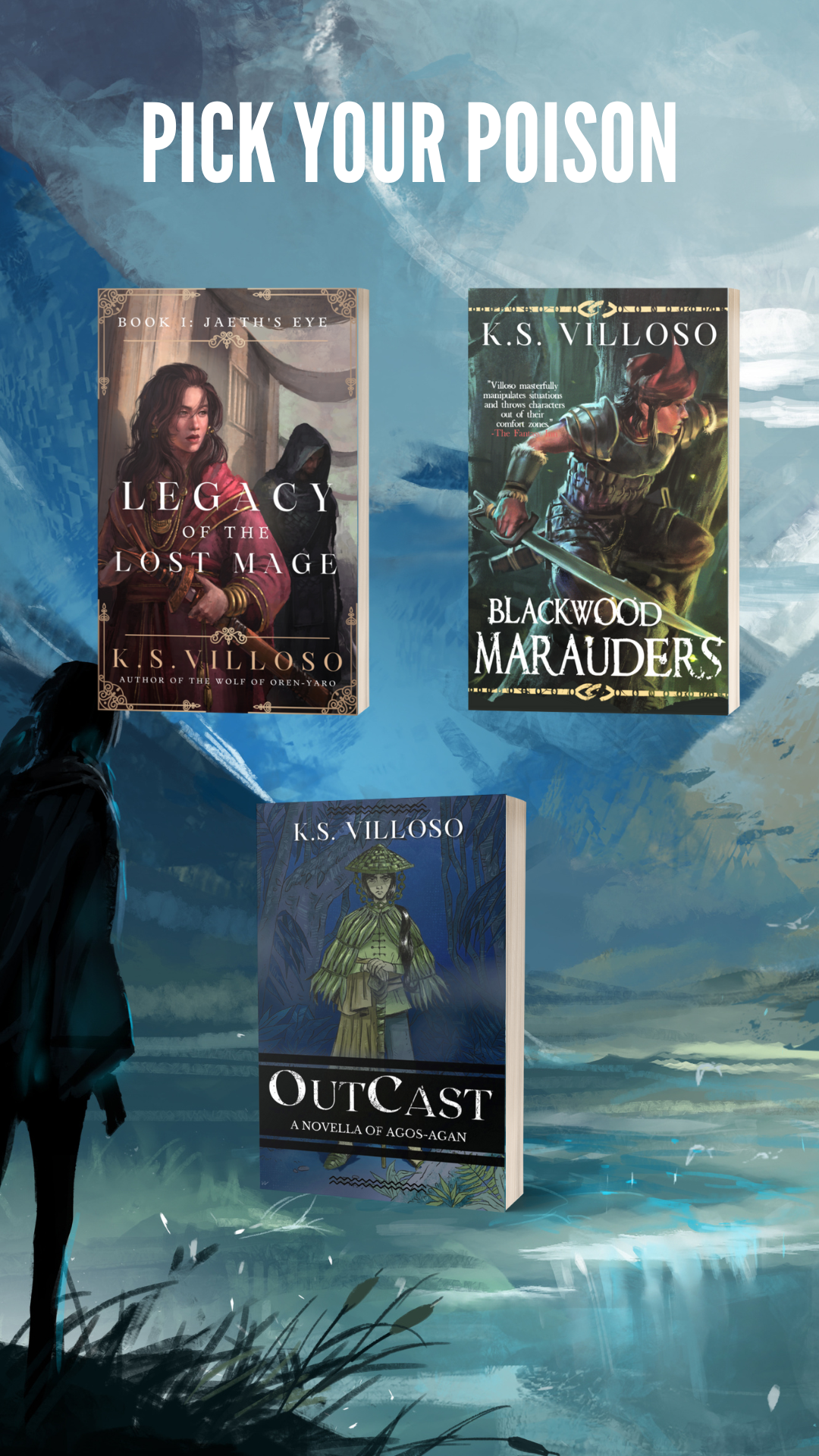And the results were sometimes terrifying.

I love classic fantasy, the sort of high, medieval fantasy we’re all used to. Lord of the Rings, Game of Thrones…typical fantasy fare. Dragons and all of that. So naturally, I’ve got a bit of the familiar, the typical, in my worldbuilding–dragons and basilisks and kings and castles.
But one of the things that really got my heart pumping when I first started writing fantasy was the chance to insert a lot of my own culture. I took a lot of the stories that frightened me as a child–stories of bloodsucking monsters and people who turned into things to feast on flesh at night, of strange beasts that turned into ash when killed–and inserted them into my worldbuilding. Not everything made it into the final cut–there was a scene early on I removed for pacing purposes when Kefier and Ylir encountered horse-beasts stalking through the forest.

The theme of an “aborted baby” and monsters manifesting from anger and rage also gave birth to Naijwa’s beast, though I kept the explanations within the magical system of the world.
The combination of both familiar fantasy elements with a dash of the stuff that used to keep me awake at night is part of what I love about worldbuilding. The Agartes Epilogues only barely touches on some of these concepts, which I plan to fully expound on in later stories. The best of it will come with a future novel, The Wanderer’s Gift, which is almost a full-on horror epic fantasy set in a country that is almost exclusively (but not quite perfectly) inspired by the Philippines.
Sometimes I wonder, though, if my lack of adherence to the typical fantasy fare of elves and dwarves and so on, and my use of non-Anglo Saxon names, makes my stories a little harder to digest than others.
My work falls under the broad category of “diverse fantasy” but I never actually set out to write diverse fantasy in the first place. I was blissfully ignorant of the whole debate up until fairly recently. Well, not quite; it did take reading Le Guin’s Earthsea for me to realize I could start writing fantasy with people of colour and that wouldn’t make it the worst or most boring thing in the world. I certainly didn’t know there was a debate about it, though.
In my head, I’m writing epic fantasy with a focus on characters, and that’s it. No list to check, nothing. I certainly didn’t go out of my way to write “ethnic” fantasy. (I’ve said this before, but if you are trying to place a certain ethnicity to most of my made-up nations and races, you’re out of luck. I mixed them up for a reason.)
It makes it a little bit challenging to market my work, though. I mean, how do I explain that my work isn’t going to be jumping on a soapbox or trying to be anything but classic fantasy stories about people going on adventures and getting into battles and exploring the world and meeting scary ass monsters? Sure there’s themes, but that’s me trying not to create bloated doorstoppers (which may change soon after the brick that was Sapphire’s Flight). We’re working on the new cover of Jaeth’s Eye, and I recently read about how having people of colour on the cover is detrimental to sales. Oh well–we have two on there. Might as well stick swords in to even it out.
And now this is the kind of stuff that keeps me awake at night. Man, it was a lot easier when it was the scary ass monsters.

